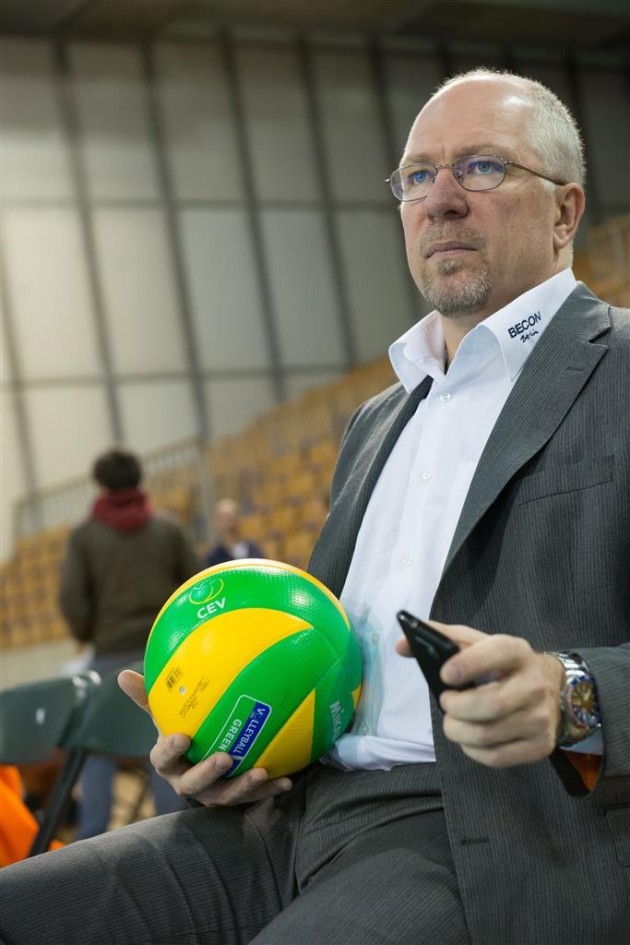VNL – Video Challenge Explanations

The Video Challenge System is intended to more correct decisions (not perfect, but better) and to reduce the amount of controversy around individual match situations. Sometimes, however, the exact opposite occurs, the challenge decision creates more discussion instead of less. This is always the result of a lack of communication between the different groups within the game. There were two specific situations that arose in the men’s match between Germany and France where a lack of mutual understanding led to unnecessary controversy.
SITUATION 1 – It is not block touch but last touch
At 18-16 in the second set, a French player ‘threw’ the ball off the block and was awarded a point. In the past this would have been an obvious point to the attacker. Once the ball had hit the block the call was clear. However, an eagle eyed coach noticed that, when viewed in slow motion, in many of these cases the attacker is still directing the ball after the block touch has finished. So he started to use the challenge system to verify. The challenge call used is ‘block touch’, and that is where the problems begin.
Some challenge operators do not understand the context of the request, and so only look to see if the ball did in fact touch the block. That is what occurred in this case. The ball clearly touched the block. And the attacker was clearly still in control of the ball as the last touch. The replay showed on the screen to the players showed this obvious result and an (unnecessary) argument ensued. In other matches, this challenge has worked well (eg Slovenia v Serbia). And it should be made clear that the attacker will always complain about if it is called against them but they are wrong (eg Uros Kovacevic, as above).
SITUATION 2 – Not everyone sees the same thing
The second situation occurred at 15-15 in the fifth set, i.e. the most decisive moment of the match. A French blocker penetrated into the space on the German court and interfered with the setter playing the ball. There is no specific challenge for this situation in FIVB competitions, but there is a rule that when reviewing a call, the video challenge referee can call anything that is seen in the clip, regardless of whether that is the subject of the challenge. For example, if the challenge is for a block touch, and the video shows a net touch, then they can call a fault for the net touch. So in the case of the the blocker playing the ball illegally, the workaround for the coach is to challenge for a net touch and hope the referee calls the interference that is there.
This is what the German coach duly did. The request came back negative, but the video was shown on TV and to the players on the courtside LED screen clearly showed a fault. Apparently, the French players were laughing openly, and the Germans were so incensed they lost the next point and the match. The miscommunication here is twofold. Firstly, coaches do not know that when a net touch review is requested, the video challenge operators are instructed to crop the video image so that only the specific area is in the frame and that picture is reviewed. To make this bad situation worse, the video that is shown on TV and to the teams on court, is not the video used in the review, but the video from the TV feed. I think you know what happened next.
To complicate matters further different leagues use different systems and have different rules and that sometimes adds to the frustration. FIVB rules allow the smallest number of situations to be challenged.
To avoid these controversies in the future a process by which such situations could be reviewed and referees and coaches could learn more about each other’s jobs would be extremely helpful and a standard protocol across all competitions would be helpful.
And as always, the video review should never, ever, ever, ever been shown in stadium. Except for the Hawkeye animation, it is never, ever, ever, ever helpful.
About Mark Lebedew:
Mark Lebedew authors the At Home on the Court Blog. He coaches professionally in Poland, from january 2021 with eWinner Gwardia Wrocław, in season 2019/20 with Aluron Virtu CMC Warta Zawiercie and in the period 2015-2018 with KS Jastrzębski Węgiel. That follows five seasons Germany where his Berlin Recycling Volleys won three straight league titles and a CEV Champions League bronze medal. He has prior professional experience in Belgium and Italy. Mark was also Head Coach for the Australian Men’s National Team. From next season he returns to Germany, where he will lead VfB Friedrichshafen.
Mark partnered with his brother and father to translate and publish “My Profession: The Game“, the last book by legendary Russian coach, Vyacheslav Platonov.
With John Forman, he is behind the Volleyball Coaching Wizards project (link http://volleyballcoachingwizards.com/) which identifies great coaches from all levels, making their experience, insights, and expertise available to people all over the world. The project has produced multiple books, a in e-book format available here ( link to http://bit.ly/34yakou ) or in print at Amazon here (link https://amzn.to/2JRqTE6)
In 2021, he launched project Webinars and Presentations on Demand. If you are intersested for coaching presentations and webinars available on demand, click here.